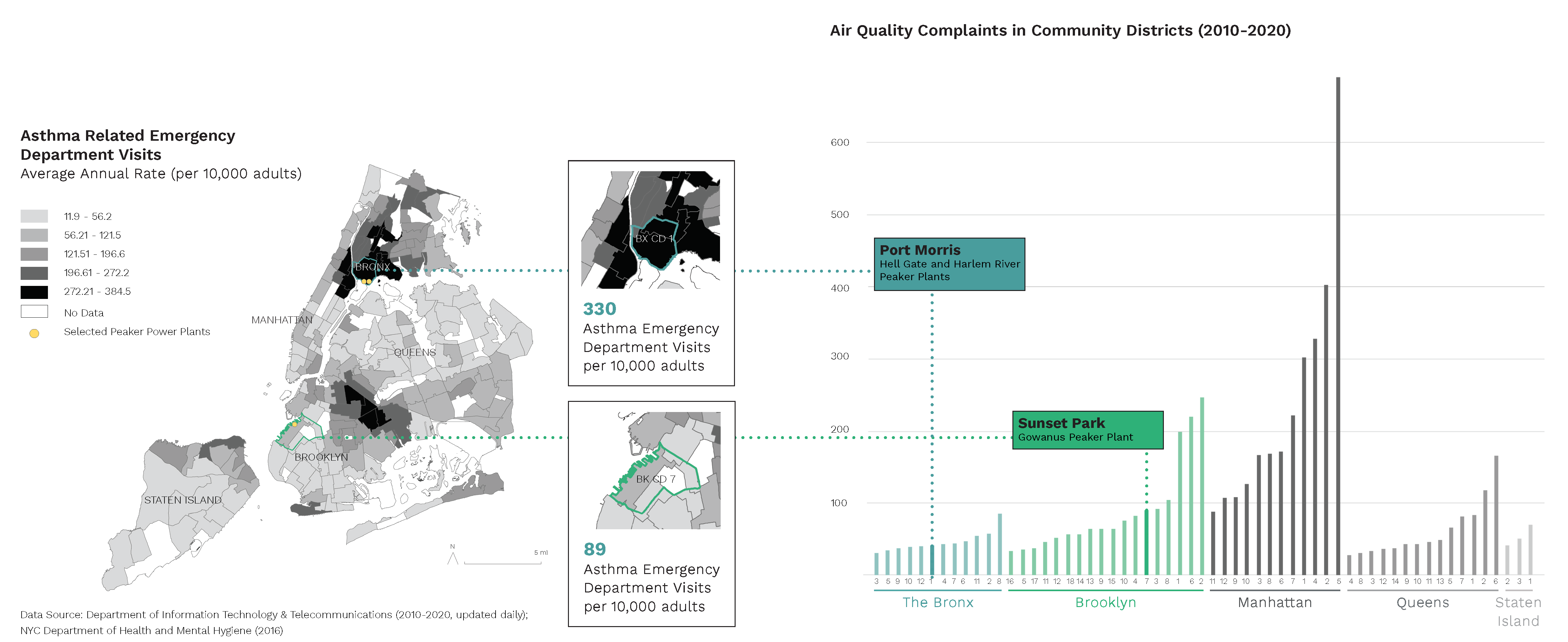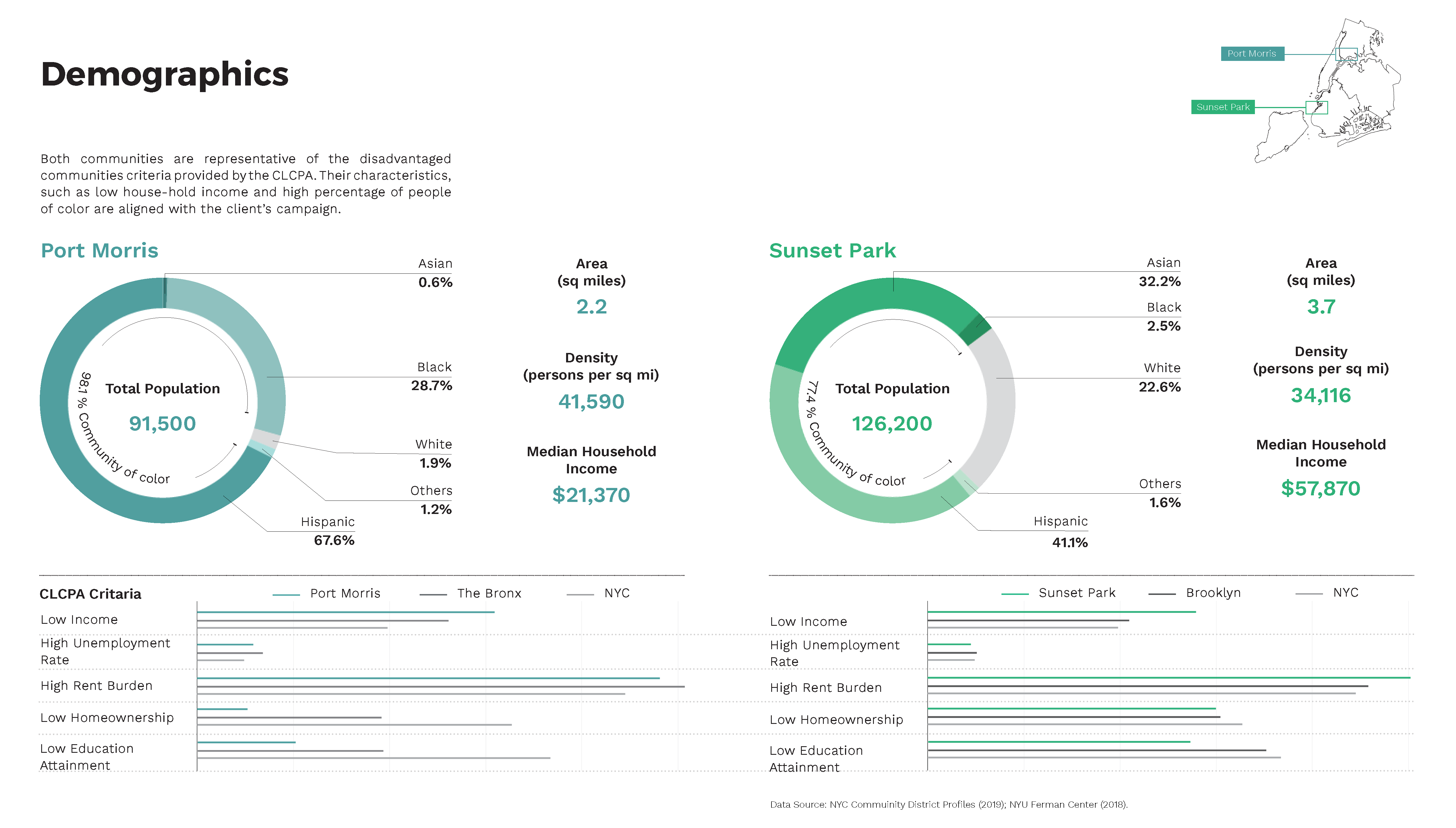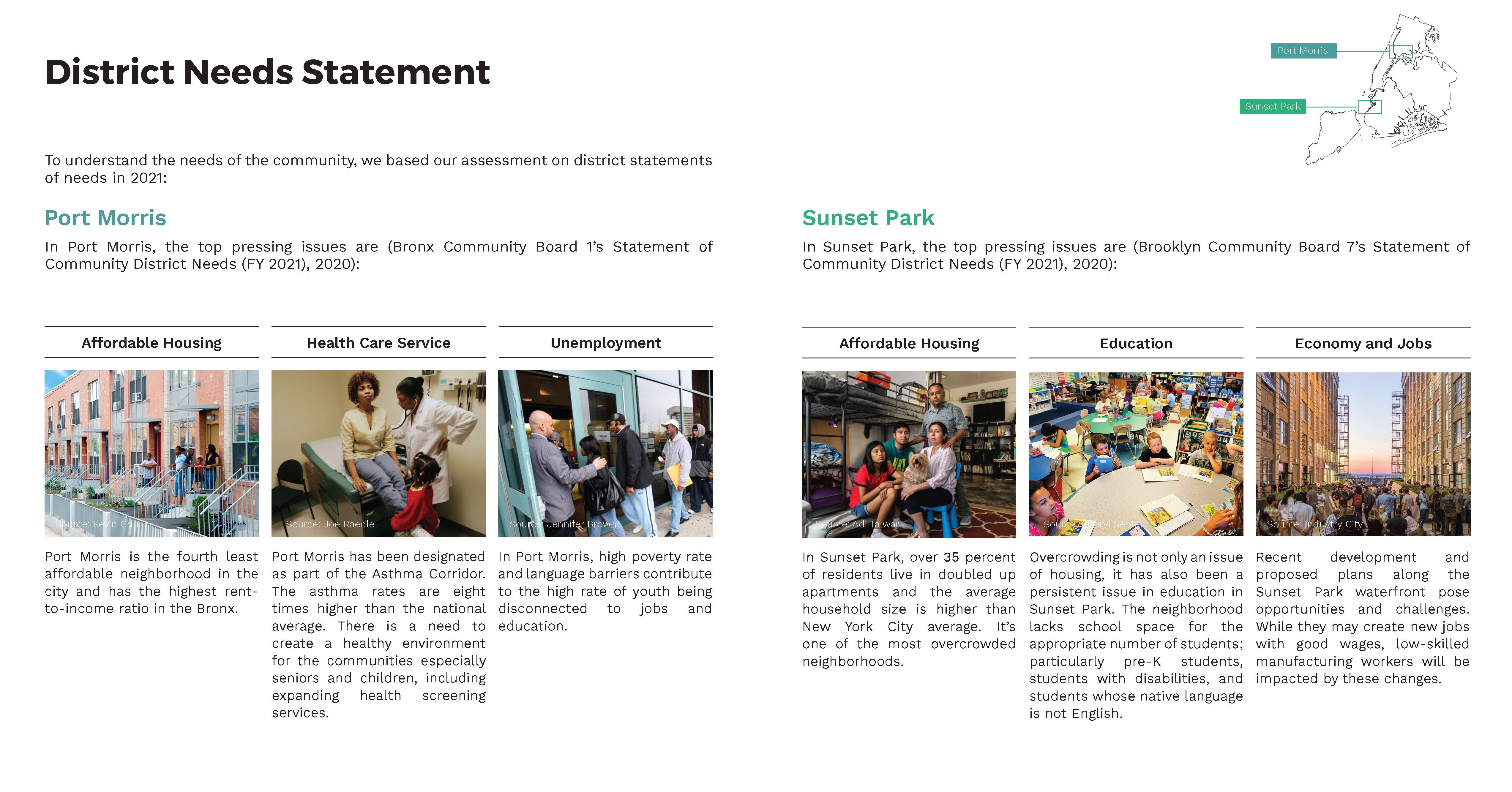03.
Identifying Community Needs in New York City
2020, Urban Planning
With Riley Burchell and Geon Woo Lee
Tools: QGIS, Tableau, InDesigh
In July 2019, New York State passed the Climate Leadership and Community Protection Act (CLCPA), a legally binding commitment to reduce greenhouse gas emissions and transition to renewable sources of electricity. In addition to these ambitious targets, the CLCPA highlights the protection of historically disadvantaged communities, defined as those that bear the burdens of environmental pollution and socioeconomic conditions or those that have experienced discrimination on the basis of race or ethnicity.
As part of the Grey-to-Green Energy Transition Spring 2020 Studio, we looked for ways to connect with local residents and community based organizations. Unfortunately, as cicumstances in the city began to develop pertaining to the COVID-19 response, it became extremly difficult to collborate with organizations and individuals. Yet, we still looked for innovative ways to capture community needs in the context of the studio outcomes.
Asthma Related Emergency Department Visits and Air Quality Complaints
In mapping the count of 311 air quality complaints per community district against asthma hospitalization and emergency department data, we saw that the areas with the highest numbers of hospitals and emergency department visits due to asthma had some of the fewest air quality complaints, while areas with relatively low hospitalization and emergency department visit rates and the largest number of air quality complaints.

311 Data Limitation: Without being able to conduct interviews with residents and local organizations, it is difficult to infer meaning from these data. However, in looking at available information about how people file complaints (online, by phone, using the 311 app) and length of complaint ticket life (average amount of time it takes each city agency to register and resolve a 311 complaint), we speculate that these trends could be indicative of (1) mistrust of/reticence to engage with systems (2) not viewing 311 as a pathway to change in local conditions (3) inaccessibility of the 311 platform in terms of access and ease of use.
Ultimately, while 311 data may not be able to capture the entire story of air quality in the five boroughs, it does serve to corroborate resident and stakeholder accounts of some human impacts of on the ground conditions
Demographics

District Needs Statement
